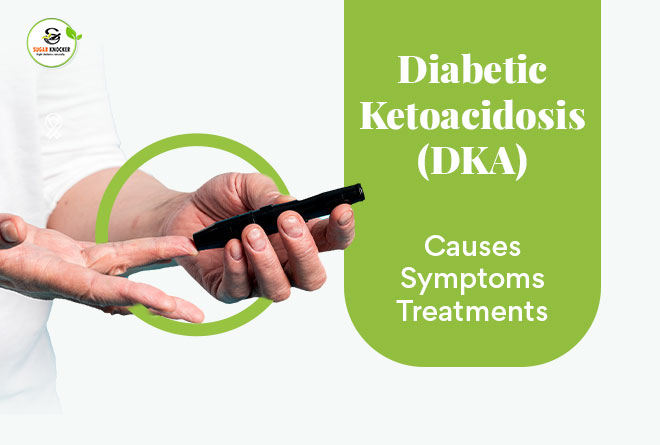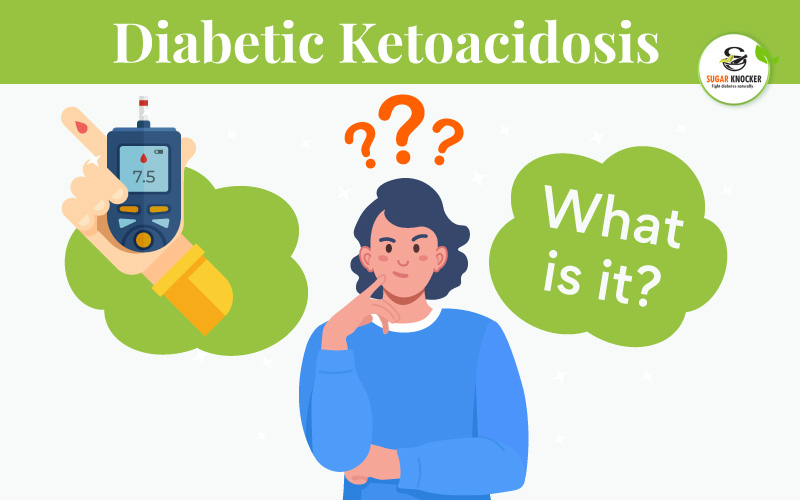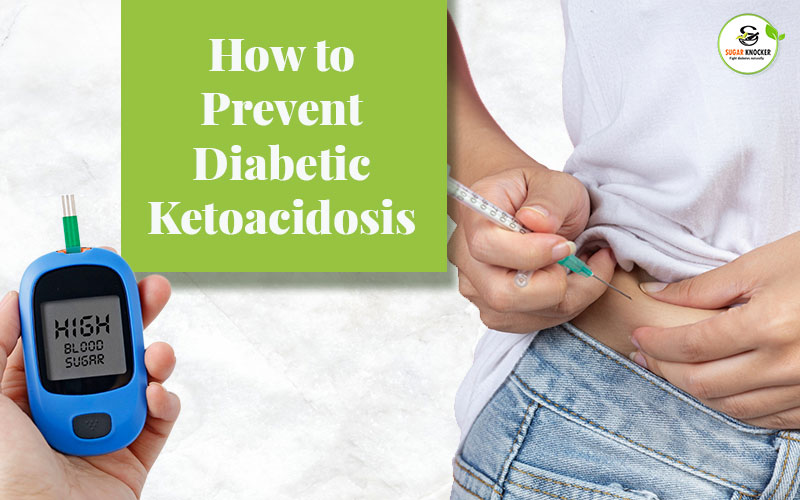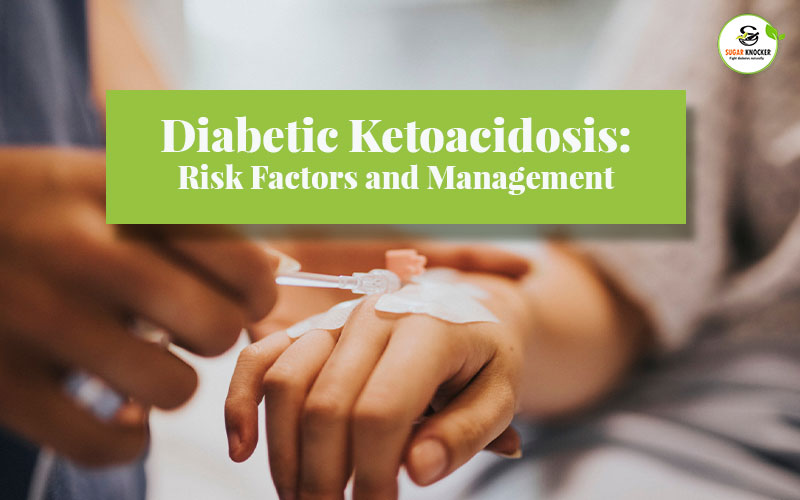
What Is Diabetic Ketoacidosis?

Diabetic ketoacidosis (DKA) is a severe diabetic complication that can be fatal. People with type 1 diabetes are more likely to develop DKA. DKA can also happen to people with type 2 diabetes.
DKA occurs when your body lacks sufficient insulin to allow blood sugar to enter your cells and be used for energy. Instead, your liver breaks down fat for fuel, producing chemicals known as ketones in the meantime. When your body produces too many ketones too quickly, they can pile up to dangerous levels.
What is DKA ICD 10?
Ketoacidosis without coma in type 1 Diabetic Mellitus.
The ICD-10-CM code E10. 10 is a billable/specific code that may be used to identify a diagnosis for billing purposes.
Causes of Diabetic Ketoacidosis – DKA

Sugar is the primary supplier of energy for the cells in your muscles and other tissues. Insulin aids the entry of sugar into your cells in normal circumstances.
Your body can’t utilize sugar effectively for energy if you don’t have enough insulin in your system. This causes the production of hormones that break down fat for fuel, resulting in the formation of ketones, which are acids. Excess ketones accumulate in the bloodstream and spill over into the urine eventually.
Some general diabetic ketoacidosis causes are:
An infection or other disease:
An infection or other ailment might cause your body to create more adrenaline or cortisol. Regrettably, these hormones work in opposition to insulin, which can result in diabetic ketoacidosis. Pneumonia and urinary tract infections are two of the most prevalent causes.
Failed Insulin treatment:
Inadequate insulin therapy, missed insulin doses, or a faulty insulin pump might leave you with too little insulin in your system, resulting in diabetic ketoacidosis.
Other factors that may contribute to diabetic ketoacidosis include:
- Suffering from physical or mental trauma
- Suffering from a heart attack or stroke
- Pancreatitis
- Pregnancy
- Addiction to alcohol or drugs, notable cocaine
- Some medications, including corticosteroids and diuretics
Diabetic Ketoacidosis – DKA Symptoms

The gradual development in polydipsia and polyuria are the most typical diabetic ketoacidosis symptoms. Other indications and symptoms of DKA include the following:
- Fatigability, widespread weakness, and weariness
- Nausea and vomiting; could be accompanied by stomach discomfort, a loss of appetite, as well as anorexia.
- A background of failure to comply with insulin therapy or missed insulin injections owing to vomiting or psychological causes, or a past record of mechanical failure of an insulin infusion pump in patients newly diagnosed with type 1 diabetes.
- Changed consciousness (e.g., mild disorientation, confusion); frank coma is rare but can happen when the condition is ignored or when severe dehydration/acidosis is present.
DKA is a life-threatening condition. If you believe you are suffering from DKA, contact your local medical assistance providers right away.
What DKA Can Cause?
DKA can cause a coma or death if left unaddressed. If you use insulin, make sure you talk to your doctor about the risk of DKA and have a strategy in place. You should keep a supply of home urine ketone tests on hand if you have type 1 diabetes. These are available at drugstores and on the internet.
You should test your urine for ketones if you have type 1 diabetes and have a blood sugar value of more than 250 milligrams per deciliter (mg/dL) twice. If you’re unwell or preparing to exercise and your blood sugar is 250 mg/dL or above, you should test.
If you have moderate or high amounts of ketones, contact your health care provider. If you think you’re on the verge of DKA, visit a doctor right away.
Treatment for Diabetic Ketoacidosis – DKA

Diabetic Ketoacidosis treatment is usually a mix of methods to bring blood sugar and insulin levels back to normal. If you experience DKA but haven’t been diagnosed with diabetes, your doctor will devise a diabetic treatment plan to prevent ketoacidosis from reoccurring.
DKA can be exacerbated by infection. Your doctor will treat your DKA if it is caused by an infection or disease, which is normally treated with medication.
Replacement of fluids
Your doctor will most likely give you fluids in the hospital. They can give them to you orally if feasible, but you may need to get fluids through an IV. Dehydration, which can lead to even higher blood glucose levels, can be treated with fluid replacement.
Insulin therapy
Insulin will most likely be given to you continuously until your blood sugar level drops to less than 240 mg/dL. Your doctor will work with you to help you prevent DKA in the future once your blood glucose levels are within an appropriate range.
Replacement of electrolytes
Your body’s electrolytes might become unusually low when your insulin levels are too low. Electrolytes are electrically charged minerals that aid in the normal functioning of your body, including the heart and nerves. An IV is also routinely used to replenish electrolytes.
Prevention of Diabetic Ketoacidosis – DKA

There’s a lot you can do to avoid diabetic ketoacidosis and other consequences of diabetes:
Make a commitment to controlling your diabetes.
Make a healthy diet and exercise a regular part of your day. Follow the directions on your diabetic medicine or insulin.
Keep an eye on your blood sugar levels.
If you’re sick or worried, you may need to test and record your blood sugar level three to four times a day, or even more frequently. The only way to ensure that your blood sugar level stays below your desired range is to carefully monitor it.
Make any necessary adjustments to your insulin dose.
Discuss how to change your insulin dosage based on your blood glucose levels, what you eat, how active you are, and whether you’re sick with your doctor or a diabetes educator. If your blood glucose levels start to climb, stick to your diabetes treatment plan to get it back to the expected range.
Keep an eye on your ketone levels.
When you’re sick or worried, use an over-the-counter urine ketones test kit to check for extra ketones in your pee. If your ketone level is moderate or high, call your doctor or go to the emergency room straight away. If your ketones are low, you might have to take extra insulin.
Be ready to act rapidly if necessary.
If your blood sugar is elevated and you have a lot of ketones in your urine, you may have diabetic ketoacidosis. Seek medical help right once.
Risk Factors of Diabetic Ketoacidosis – DKA

The most common cause of diabetic ketoacidosis is a lack of insulin in the body. Because your cells can’t use the sugar in your blood to generate energy, they must rely on fat instead. Ketones are acids produced when fat is burned. They may build up in your blood if the procedure continues for a long time. That overabundance can disrupt your blood’s chemical equilibrium, causing your entire system to malfunction.
Ketoacidosis is a problem for people with type 1 diabetes since their bodies don’t produce any insulin. Ketone levels might also rise because of some other factors.
The most common DKA criteria are:

- Have type 1 diabetes
- Are under the age of 19
- Have experienced emotional or physical trauma
- Are feeling stressed
- Have a high fever
- Have suffered a heart attack or stroke
- Smoke
- Have a drug or alcohol addiction
People with type 2 diabetes are at risk for DKA, but it is uncommon. If you have type 2 diabetes, you’re more prone to get HHNS, an illness with some comparable symptoms, especially as you become older (hyperosmolar hyperglycemic nonketotic syndrome). Dehydration can occur as a result.
DKA can be caused by a number of reasons:
You’re frequently forgetting to take your insulin dose
- Stomach problems
- Infections
- Heart disease, such as a heart attack
- Stomach sickness
- Infections
- Heart problems, such as a heart attack
- Recent stroke
- Not taking your insulin as instructed
- A pulmonary blood clots
- A serious sickness or trauma
- Pregnancy
- Surgery
- Steroids or antipsychotics
- Illegal substances like cocaine
Complications of Diabetic Ketoacidosis – DKA

Fluids, electrolytes (such as sodium, potassium, and chloride), and insulin are used for diabetic ketoacidosis treatment. Remarkably, the most prevalent diabetic ketoacidosis complications are linked to this life-saving medication.
Complications of diabetic ketoacidosis treatment include:
Low blood sugar levels (hypoglycemia):
Insulin permits sugar to enter your cells, resulting in a decrease in blood sugar levels. You might develop low blood sugar if your blood sugar level lowers too rapidly.
Potassium deficiency (hypokalemia):
Your potassium level may decrease too low as a result of the fluids and insulin needed to treat diabetic ketoacidosis. Potassium deficiency can cause problems with your heart, muscles, and nerves. As part of the therapy of diabetic ketoacidosis, electrolytes, especially potassium, are frequently administered together with fluid replacement to avert this.
Swelling in the brain (cerebral edema):
If you adjust your blood sugar level too rapidly, your brain may enlarge. Children, particularly those with recently diagnosed diabetes, appear to be more susceptible to this consequence.
DKA is a dangerous condition that can be prevented. Stick to your treatment plan and take charge of your health. If something isn’t responding in your body or you’re having problems, speak to your doctor. They can assist you to change your diabetes ketoacidosis treatment plan or come up with options for improved diabetes management.
